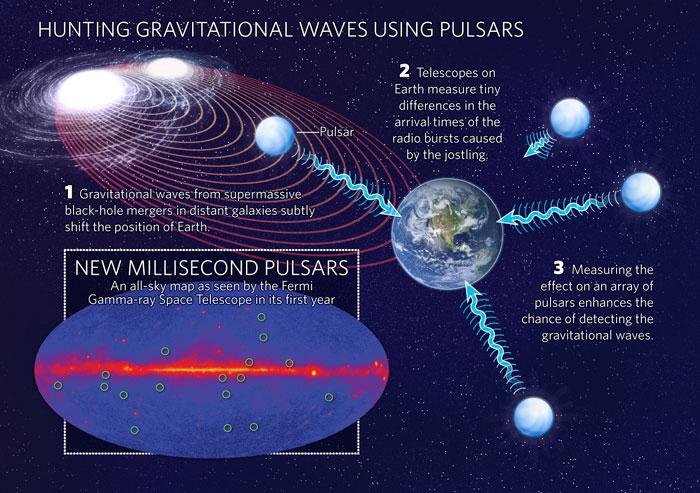Detecting Gravitational Waves
It is understood through Einstein’s famous Theory of Relativity that space and time can be viewed as a smooth fabric, known as spacetime, which can warp when a mass is placed on it. When a mass on the spacetime fabric moves fast enough, such as in binary star systems, the masses can actually cause a disturbance in spacetime itself, resulting in a waves that propagates outwards in a ripples. As briefly mentioned, a pulsar’s axis of rotation is generally not aligned with the axis of its magnetic field, similar to those of Earth. Consequently, observers far away receive the pulsar’s radiation in timely pulses. These extremely consistent pulsing can be used to detect gravitational waves by analyzing any irregularities in the time between each observed pulse of a pulsar.[1]
Since gravitational waves are propagating, periodic expansions and contractions of spacetime (link: Gravitational Waves), they cause the earth to shift position very slightly. This shift in the position of the earth will then cause deviations in the observed pulse timings of pulsars. Using a telescope, one can observe these perturbations from numerous pulsars as shown below.

[2]
Next
